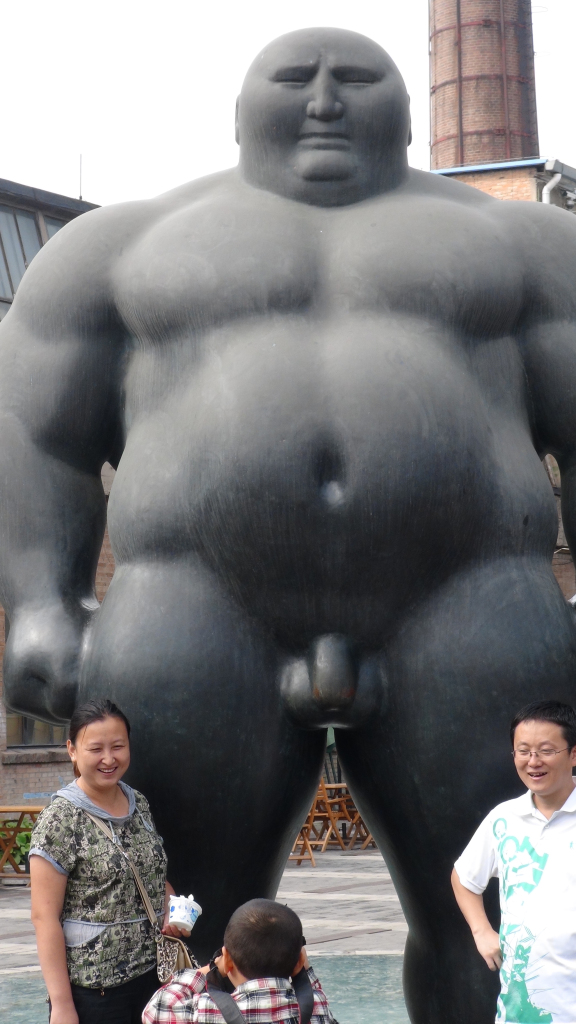I first mentioned Robert Adanto’s film Rising Tide (2008) in this blog early this year. I’ve not finally got my hands on it. The film was produced in 2008, and features Chinese art and artists from Beijing, Shanghai, Los Angeles and New York. Following is a a rough form of my comments presented at the Rocky Mountain in Modern Language Association meeting early last month:
Rising Tide is a bold work, but not because it allows the filmmaker his own voice, subject to speculation, revision, polyphony in Chu Yingchi’s terms (on Chinese Documentary. Adanto does not appear in his film. He begins (via Gordon Chang, lawyer and author of the 2001 “coming collapse of China,” a not particularly prophetic work) that China is too vast to generalize about, and then aims to generalize. He does so, though, using contemporary art, most particularly contemporary video art, that of Cao Fei, Zhang O as well as photography of Yang Yong and others. In other words, the point of view of the work, bifurcated in Chang’s “China is coming to an end” and Victoria Lu’s (Creative Director, Museum of Contemporary Art, Shanghai) more measured and certainly optimistic view, is prismatic. Authority is asserted and then dissolves, repeatedly, although a pervasive sense of menace (for Chang, the Chinese Communist Party) remains, increasingly unnamed, often associated with money, but ever ambivalent. The menace, if anything, is history itself, the violence of China’s recent past, a pressure seemingly connected with the current state of development, a new menace, sheer rapidity of change.
What comes out intact and clear from the otherwise mutually canceling perspectives of Adanto’s authorities is this element of change and its relationship to art. More specifically, and again beginning with Gordon Chang, but also including (predictably) such China arts-world figures as Colin Chinnery (then of Ullens) and Meg Maggio, former director of the Courtyard gallery in Caochangdi and others, is that artists are the best spokespeople for the changes taking place in China, the real documentarians, so to speak. Chen Qiulin, arguably the best example of this, and the most powerful to my mind in the film, frequently refers to herself as just such a documentarian. Adanto is not so much out of the way of this process, as the way itself for their somewhat uncanny integration. For in addition to the artists testimony, or even intimate shots of their working environments and people featured in, for instance, Alison Klayman’s recent work on Ai Weiwei, Adanto has used the artists own art, photography, and video in particular, to advance his edification project. The social point of view of the text, its authority, is thus delicately mashed-up with some highly potent in its own right aesthetic objects, objects which are seduced into the framework of “the document,” a setting at once befitting but also powerfully misplaced. Where Bill Nichols fourth-order voice, that of the filmmaker revealing him or herself in the network of perspectives s/he purports to document, Rising Tide , with a simple “courtesy of” (given gallery) shell games the voices to the point that the overlap fully drowns out the single authority. What emerges is a rich act of theft, a chaos that seems so clearly in tune with its subject that one senses significant, if perhaps ethically dubious, accomplishment.


